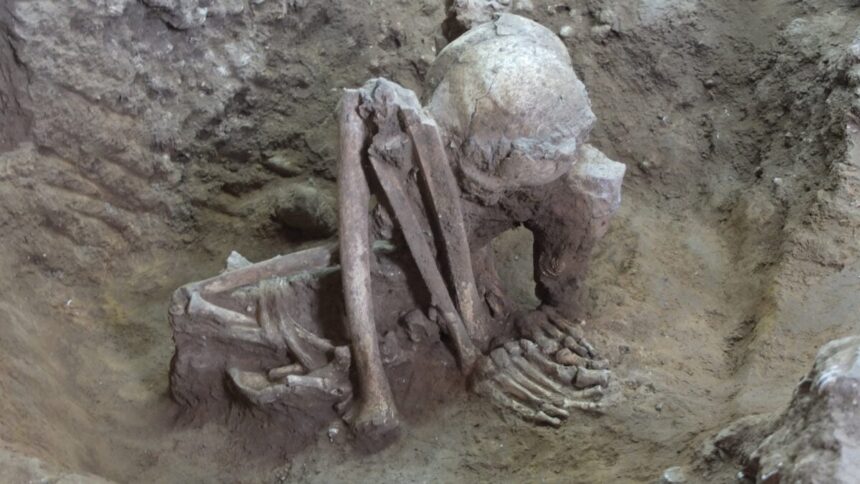Researchers have discovered what they believe to be the earliest evidence of artificial mummification known to science, pushing back the timeline for the burial ritual to far before the time of the ancient Egyptians.
Hunter-gatherers in Southeast Asia who lived some 20,000 and 4,000 years ago buried their dead in tightly crouched or squatting positions. Not only that, but these communities also practiced a form of mummification that involved drying out the human remains over a fire, as researchers detailed in a study published Monday in the journal PNAS—a practice that has been seen in other cultures elsewhere in the world.
The team studied 54 pre-Neolithic burials from 11 Southeast Asian archeological sites dating to between 12,000 and 4,000 years ago. “The findings confirm that many of these pre-Neolithic flexed and squatting burials were treated by an extended period of smoke-drying over fire, a process of mummification similar to that recorded ethnographically in some Australian and Highland New Guinea societies,” the researchers wrote in the paper.
“Some of the analyzed archaeological samples represent the oldest known instances of such artificial mummification in the world,” they concluded.
The mystery of the crouched burials
Archeologists had previously classified the crouched burials in Southeastern Asia as “primary burials,” Hsiao-chun Hung, a co-author of the study and a researcher from the Australian National University, wrote in an article published in The Conversation. A primary burial is the technical name for a grave in which a complete body was deposited in a single ceremony.
But Hung and her team noticed some aspects of the burials that challenged this theory, including anatomically implausible skeletal arrangements and bones with evidence of burning concentrated in areas with less flesh.
“I remember blurting out – half joking but genuinely curious – ‘Could these burials be similar to the smoked mummies of Papua New Guinea?’” Hung explained, perhaps referring to the funerary tradition of the Anga people in Papua New Guinea, a culture that still engages in mummification today.
The researchers found a significant resemblance between modern smoke-dried mummification practices in the New Guinea Highlands and the prehistoric remains. Still, the ancient remains didn’t have clear, superficial evidence of burning. To test their hypothesis further, the team used laboratory techniques to investigate whether there were small changes in bone structure from exposure to high temperatures. This approach revealed that almost all of the studied remains appeared to have sat in low heat for some time, indicating they were smoked.

An enduring funerary practice
“Our burial samples from Southeastern Asia highlight a remarkably enduring set of cultural beliefs and mortuary practices that persisted for over 10,000 y among hunter-gatherer communities who were related through their craniofacial attributes and genomic affinities to Indigenous New Guinea Highland and Australian populations,” the researchers wrote in the study.
Southeastern Asia’s hunter-gatherers’ physical features and genetics have been linked to Indigenous groups in New Guinea and Australia, suggesting that the funerary tradition spread throughout these regions and endured for thousands of years.
Read the full article here












